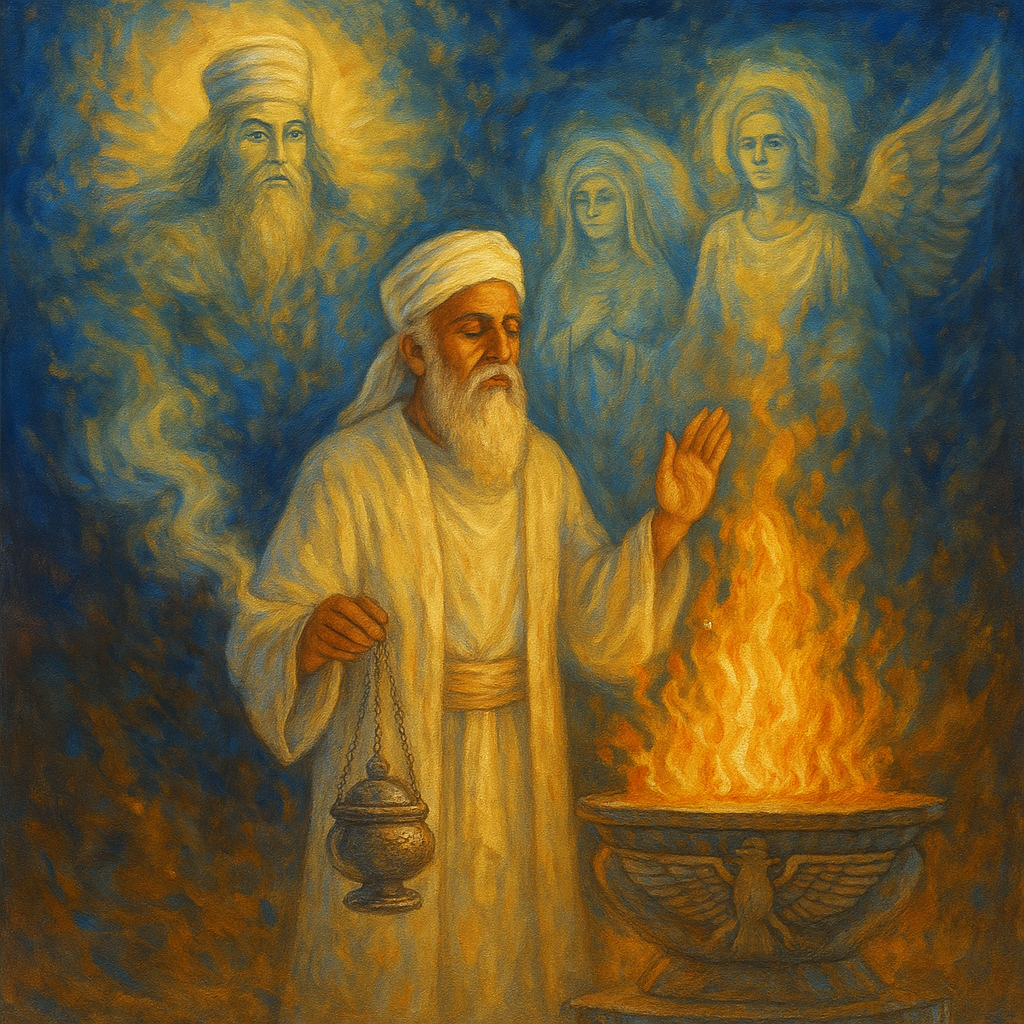Persian and Zoroastrian Beliefs: Spirit Communication, Mediumship, and Spiritual Dimensions
Introduction
Ancient Persian spirituality, especially within Zoroastrianism (founded by the prophet Zarathustra/Zoroaster around the 6th century BCE), shaped one of the most enduring cosmological and ethical systems in world religion. At its heart was the belief that humans lived within a cosmic struggle between forces of light and darkness, where spirits, divine beings, and the souls of the dead played active roles. Spirit communication, ritual offerings, and mediumship-like practices helped maintain balance between the human and divine realms.
Zoroastrian Cosmology: A Dualistic Universe
Zoroastrian thought describes existence as a battlefield between:
Ahura Mazda (Wise Lord): The supreme god, embodying truth (asha) and light.
Angra Mainyu (Ahriman): The spirit of deception and chaos, leading demonic forces.
The cosmos is structured into multiple dimensions:
The Material World (Getig): Human existence on earth.
The Spiritual World (Menog): The unseen realm of divine beings, spirits, and demons.
The Afterlife Realms: Souls of the dead pass through judgment at the Chinvat Bridge, leading to paradise, purgation, or darkness.
These realms overlapped, meaning humans were in constant interaction with spiritual forces.
Spirit Communication in Persian Traditions
1. Ancestral Veneration and the Fravashi
The Fravashi were guardian spirits or higher aspects of souls, guiding both the living and the dead.
Families honored ancestors during festivals like Farvardigan (Muktad Days), when spirits were believed to return to earth.
Communication occurred through ritual offerings, fire altars, and recited prayers, ensuring blessings from ancestral spirits.
2. Mediumship and Priestly Roles
Zoroastrian priests (magi), renowned even in Greek accounts, acted as intermediaries with spiritual forces.
Through chants (manthras) and fire rituals, they invoked divine beings (yazatas) for guidance and protection.
While not mediumship in the Western sense, the priests’ trance-like recitations created channels for divine communication.
3. Dreams and Visionary Contact
Dreams were considered portals to the spiritual dimension.
The soul (urvan) could temporarily leave the body in dreams, receiving guidance from divine beings or warnings from malevolent spirits.
Spiritual Beings and Other Dimensions
Yazatas (Worthy Ones): Divine beings associated with natural and moral forces (e.g., Mithra, guardian of truth and contracts).
Amesha Spentas (Holy Immortals): Aspects of Ahura Mazda, embodying virtues such as truth, devotion, and immortality.
Daevas: Demonic beings aligned with Angra Mainyu, often causing illness, deception, or misfortune.
Fravashi: Ancestral guardian spirits guiding individuals and communities.
Urvan (Soul): The personal essence of each being, capable of journeying between dimensions.
Rituals and Techniques of Spirit Contact
Fire Rituals: Sacred fires were central portals of communication, symbolizing divine truth and serving as channels to the spiritual realm.
Prayers and Manthras: Recitations (later written in the Avesta) summoned divine beings, warded off evil spirits, and maintained cosmic order.
Festivals of the Dead (Farvardigan): Offerings of food, flowers, and prayers invited ancestors to commune with the living.
Purification Rituals: Using consecrated water and fire to expel malevolent spirits and maintain balance.
Dream Incubation: Sleep in sacred spaces sometimes encouraged ancestral or divine visitations.
Comparisons with Western Mediumship
Similarities: Ancestral contact, dreams as spirit communication, priestly intermediation, and rituals to invoke or expel spirits.
Differences: Zoroastrian practice emphasized cosmic dualism and moral choice, focusing on collective protection and purity rather than evidential proof of individual survival. Spirit communication was ritualized and ethical, integrated into the cosmic struggle between good and evil.
Continuity and Legacy
Zoroastrian traditions influenced many later religions, including Judaism, Christianity, and Islam, particularly in their concepts of angels, demons, and judgment after death. Today:
Zoroastrian communities in Iran and India (Parsis) still perform ancestral rites and fire rituals.
Farvardigan festivals continue to honor the spirits of the dead.
Zoroastrian prayers and teachings remain focused on maintaining harmony with spiritual dimensions.
Conclusion
Persian and Zoroastrian beliefs in spirit communication, mediumship, and multidimensional realms reveal a worldview where the living, the dead, and divine beings constantly interacted. Through fire rituals, ancestral veneration, priestly recitations, and dreams, Zoroastrians sustained dialogue with the unseen.
Unlike Western Spiritualism, these traditions emphasized cosmic morality, dualism, and communal harmony, embedding spirit communication into the eternal struggle between truth and deception, light and darkness.

